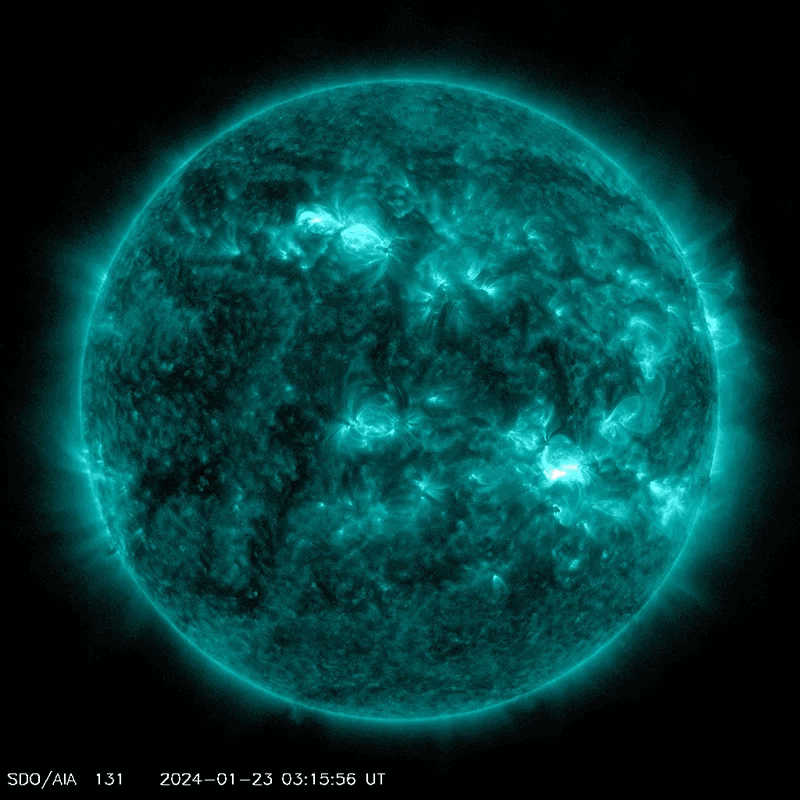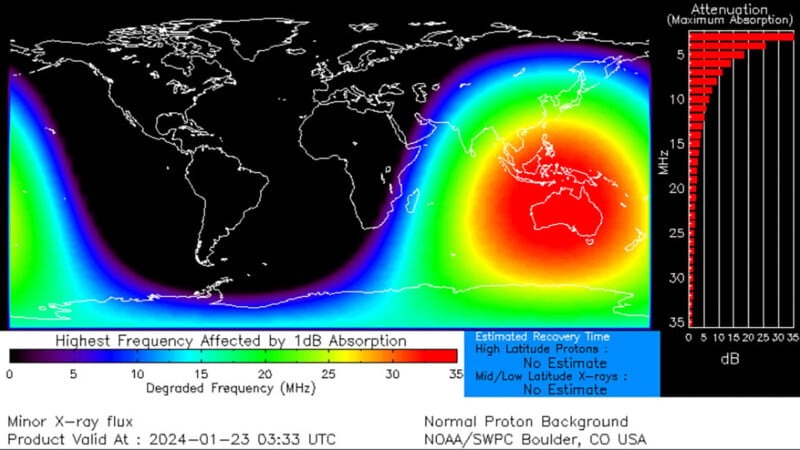Earlier this week, two large-scale flares occurred on the Sun almost simultaneously, which created an extremely rare phenomenon on our star. On January 22, the sunspots AR3559 and AR3561, located in different hemispheres of the Sun at a distance of about 500 thousand km from each other, generated two powerful solar flares simultaneously.

According to Spaceweather, the power of the events has reached the M5.1 mark, which is a high indicator, and can lead to a temporary shutdown of radio communications at the poles of the Earth. The flares have already caused a 30-minute radio blackout at frequencies below 30 MHz in parts of Australia and Indonesia. Although the flares indicate an increase in the Sun’s activity within its 11-year solar cycle, no significant aurora activity was observed this time.

Solar flares can sometimes cause “cannibalistic coronal mass ejections”, which leads to powerful solar storms and beautiful auroras on Earth. However, there is another kind of flare that occurs simultaneously in different parts of the Sun — they are called sympathetic flares.
“In the past, researchers assumed that a sympathetic flare was just a freak coincidence. But a 2002 study revealed that the flare pairs are actually linked together — or more accurately, their sunspots are linked together by massive, invisible magnetic field loops that arc around the sun. Therefore, the flares can be considered as two parts of a single explosion,” Space explains.
Sympathetic flares can be separated even in half an hour. However, in the latter case, judging by the images taken by NASA’s Solar Dynamics Observatory (SDO), the two solar flares were separated by only a few minutes, and perhaps even seconds.
Sympathetic flares are extremely rare. According to the 2022 study. According to the 2022 study “Sympathetic solar flare: characteristics and homogeneities,” 2,204 sympathetic flares were detected between 1975 and 2017 out of a total of 77,604. The study shows that the frequency of such phenomena depends on the activity of the solar cycle, growing with increasing solar activity.
Although recent sympathetic solar flares have not caused significant geomagnetic storms in the Earth’s atmosphere, photographers should keep a close eye on such phenomena. Solar activity is increasing, and this opens up new opportunities for great photos of the aurora borealis.
Earlier we talked about the main facts about solar flares.
Follow us on Twitter to get the most interesting space news in time
https://twitter.com/ust_magazine


